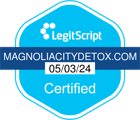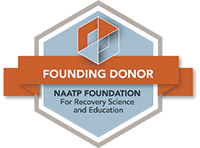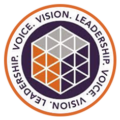Dilated pupils, or mydriasis, is a condition where the black center of the eye (the pupil) becomes larger than normal. While this can occur naturally in response to low light, certain emotions, or medical conditions, it is also a common side effect of drug use. Understanding which drugs cause dilated pupils, the science behind this phenomenon, and the signs of drug addiction can help individuals recognize potential substance abuse issues and seek appropriate treatment.
What Causes Dilated Pupils?
Stimulant, hallucinogenic, and dissociative drugs all can cause dilated pupils. However, drug use is just one of many catalysts for the condition.
Pupil dilation is controlled by the autonomic nervous system, which regulates involuntary bodily functions such as heart rate, digestion, and pupil size. The iris, which is the colored part of the eye, contains two sets of muscles: the sphincter pupillae, which constricts the pupil, and the dilator pupillae, which expands it. These muscles respond to signals from the brain, which are influenced by light, emotions, and chemical substances.
In low-light conditions, the pupils dilate to allow more light to enter the eye, improving vision. Conversely, in bright light, the pupils constrict to protect the retina from excessive light exposure. However, pupil size can also be affected by neurotransmitters such as dopamine, serotonin, and norepinephrine. These can be influenced by certain drugs, such as marijuana or cocaine.
Health Conditions that Cause Pupil Dilation
While drug use is a common cause of dilated pupils, other factors can also lead to this condition. These include:
- Trauma or injury to the eye: Damage to the iris or surrounding structures can affect pupil size.
- Neurological conditions: Conditions such as migraines, seizures, or brain tumors can impact the nerves controlling the pupils.
- Medications: Certain prescription medications, including antihistamines, decongestants, and antidepressants, can cause pupil dilation as a side effect.
- Emotional responses: Strong emotions like fear, excitement, or arousal can trigger the release of adrenaline. This can lead to temporary pupil dilation.
When these factors are not present or applicable, you might consider if drug use is a possible cause for one’s dilated pupils.
Which Drugs Cause Dilated Pupils?

Many drugs, both legal and illegal, can cause pupil dilation by affecting the brain’s neurotransmitters. These substances are commonly associated with this symptom:
Stimulants increase activity in the central nervous system, leading to heightened alertness, energy, and focus. They also trigger the release of dopamine and norepinephrine, which can cause pupil dilation. Common stimulants include:
- Cocaine: This powerful stimulant blocks the reuptake of dopamine, leading to euphoria and increased energy.
- Amphetamines: Prescription medications like Adderall and illicit drugs like methamphetamine may have this effect.
- MDMA (Ecstasy): MDMA is a synthetic drug that combines stimulant and hallucinogenic effects, often causing prolonged pupil dilation.
Hallucinogens alter perception, mood, and cognitive processes by interacting with serotonin receptors in the brain. This interaction can lead to significant pupil dilation. Examples include:
- LSD (Acid): LSD is a potent hallucinogen that causes vivid visual and auditory hallucinations.
- Psilocybin (Magic Mushrooms): This naturally occurring hallucinogen found in certain species of mushrooms is often referred to as taking “magic mushrooms” or “shrooms.”
- Peyote (Mescaline): Peyote is a hallucinogenic cactus that is sometimes used in traditional rituals for indigenous Americans, but is considered a Schedule 1 substance in the U.S.
Dissociative drugs distort perceptions of sight and sound, and can create feelings of detachment from the environment and self. These drugs often cause pupil dilation as part of their effects. Examples include:
- Ketamine: Though this dissociative anesthetic can be used medically, it’s also abused for its hallucinogenic effects.
- PCP (Phencyclidine): PCP is a powerful dissociative drug that can cause severe psychological effects.
Anticholinergic drugs block the action of acetylcholine, a neurotransmitter involved in muscle movement and various brain functions. Doctors prescribe anticholinergics for a variety of conditions, including psychiatric disorders, respiratory diseases, and gastrointestinal issues. This type of drug is often prescribed, but can be abused by those who have a prescription but take more than the recommended dose. Examples include:
- Atropine: This drug treats bradycardia (slow heart rate), as a pre-anesthetic, and in eye exams to dilate pupils.
- Benztropine (Cogentin): Benztropine is used to manage symptoms of Parkinson’s disease and extrapyramidal side effects caused by antipsychotic medications.
- Dicyclomine (Bentyl): Doctors prescribe this to treat irritable bowel syndrome (IBS) and gastrointestinal spasms, among other issues.
Opioids typically cause pupil constriction. However, in rare cases, certain synthetic opioids (such as fentanyl) can cause paradoxical pupil dilation instead of constriction. This unexpected reaction is not fully understood but may be linked to factors such as dosage, mixed drug use, or the dysregulated state of one’s nervous system.
Although cannabis is not typically associated with significant pupil dilation, some users may experience mild changes in pupil size due to its effects on blood pressure and eye pressure. These changes are usually subtle and temporary, often resulting from the way cannabis interacts with the autonomic nervous system.
For instance, THC (tetrahydrocannabinol), the primary psychoactive compound in cannabis, can cause a temporary drop in blood pressure, which may lead to slight pupil dilation in some individuals. However, this effect is generally less pronounced compared to other substances like stimulants or hallucinogens, and is not considered a reliable indicator of cannabis use.
Signs of Drug Addiction

Dilated pupils can be a visible sign of drug use, but they are often accompanied by other behavioral, physical, and psychological symptoms. Recognizing these signs can help identify a potential addiction and prompt early intervention. Common signs of drug addiction include:
Consider the following behavioral signs and changes to determine if a loved one is struggling with addiction:
- Changes in social circles: Associating with new friends who use drugs or isolating from family and old friends can be a sign of drug use.
- Neglecting responsibilities: Failing to meet work, school, or family obligations can indicate larger issues such as substance abuse.
- Secretive behavior: Hiding drug use or lying about activities is common for those who suffer from addiction.
- Financial problems: Spending excessive money on drugs, experiencing sudden financial difficulties or losing income due to absences from work (or drug purchasing) are common situations for those struggling with substance use.
Drug abuse often manifests through physical changes that can serve as warning signs. These changes may vary depending on the type of substance being used, the frequency of use, and the individual’s overall health.
- Changes in appearance: Individuals may exhibit poor hygiene, such as unwashed hair, dirty clothing, or body odor, as well as unexplained bruises, marks, or sores on their skin.
- Sleep disturbances: Drug abuse can lead to significant disruptions in sleep patterns, including insomnia (difficulty sleeping) or hypersomnia (excessive sleeping).
- Changes in appetite: Many substances alter appetite, leading to significant weight loss or gain over a short period of time.
- Withdrawal symptoms: When not using the drug, individuals may experience physical withdrawal symptoms such as nausea, sweating, tremors, or muscle aches.
Drug abuse not only affects the body but can have profound impacts on mental and emotional well-being. These psychological signs can be subtle at first but often become more pronounced as substance use escalates.
- Mood swings: Individuals may experience rapid and unpredictable changes in mood, such as sudden irritability, anxiety, or episodes of depression.
- Loss of interest: A noticeable decline in enthusiasm for hobbies, activities, or relationships that were once enjoyable is a common sign of drug addiction.
- Cravings: Intense and persistent urges to use the drug can dominate an individual’s thoughts, making it difficult to focus on other aspects of life.
- Poor decision-making: Drug abuse often leads to impaired judgment, resulting in risky behaviors, irrational choices, or neglect of personal and professional responsibilities.
Heal From Addiction at Magnolia City Detox
Overcoming drug addiction is a challenging but achievable goal with the right support and treatment. Magnolia City Detox offers comprehensive addiction treatment programs designed to address the physical, emotional, and psychological aspects of substance abuse.
At Magnolia City Detox, each individual receives a customized treatment plan tailored to their unique needs. We offer a free assessment upon first contact to begin the process of personalized care. This approach ensures that all aspects of addiction are addressed, including a dual diagnosis program for underlying mental health conditions.
The first step in recovery is often medical detoxification, which involves safely removing the drug from the body. Magnolia City Detox provides medically supervised detox to manage withdrawal symptoms and ensure a safe and comfortable process. Under professional care and supervision, patients may take medications to manage withdrawal symptoms.
Recovery is an ongoing process, and Magnolia City Detox provides aftercare planning and support to help individuals maintain sobriety after completing treatment. This may include outpatient therapy, support groups, and relapse prevention strategies.
With personalized treatment plans, medical detox, therapy, and holistic approaches, Magnolia City Detox is committed to helping individuals heal and reclaim their lives. Don’t wait — reach out today and take the first step toward a healthier, drug-free future.







